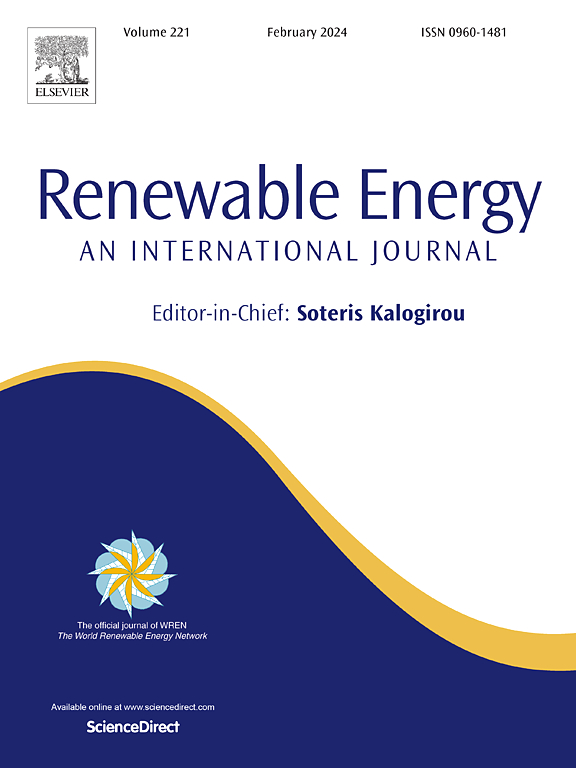Utilizing electrooxidation for textile effluent wastewater treatment and simultaneous electrocatalytic hydrogen production: Transforming waste into energy and promoting water reuse in a circular economy context
IF 9
1区 工程技术
Q1 ENERGY & FUELS
引用次数: 0
Abstract
Textile effluent wastewater poses a serious environmental risk because of its high concentration of pollutants, which include organic compounds, heavy metals, and dyes. The present study investigates the technical and economic feasibility of hybrid water electrolysis performances. Specifically, real textile effluent wastewater was utilised to examine simultaneous abatement and electrochemical hydrogen production. The treated water can be recycled in the textile mill, offering the benefits of trash-to-treasure and cost savings through the circular economy. In addition to reducing the environmental impact of textile wastewater, the synergistic approach seeks to maximise its potential for producing hydrogen as clean energy. Here, the commercially available stainless sheet was used as the anode in the electrochemical setup system and the two-dimensional Ti3C2TX MXene was used as the catalyst embedded cathode. The optimal electrode-electrolyte parameter settings resulted in an 83 % decrease in COD level and a degradation efficiency of about 88 %. The potential for widespread adoption in the textile industry is highlighted by the discussion of the economic viability and environmental advantages of using wastewater from textile effluents for pollutant degradation and hydrogen production. Hence, the energy estimation was looked at and estimated in order to evaluate the process viability. For instance, the hybrid electrolysis process uses a very small amount of electricity (0.825 kWh m−3 order−1) and has an apparent operating current (30 mA/cm2). This work could serve as a guide for the methodical assessment and choice of hybrid water electrolysis using actual wastewater. The electrode's recyclability and reuse were proven for possible commercial applications. The stability of the Ti3C2TX electrode over a wide pH range was investigated in order to produce hydrogen on a big scale at a reasonable cost.
利用电氧化法处理纺织废水并同时进行电催化制氢:在循环经济背景下将废物转化为能源并促进水的再利用
纺织废水由于含有高浓度的污染物(包括有机化合物、重金属和染料)而对环境构成严重威胁。本研究探讨了混合水电解性能的技术和经济可行性。具体而言,本研究利用真实的纺织废水来研究同时减排和电化学制氢的问题。处理后的水可在纺织厂循环使用,实现变废为宝,并通过循环经济节约成本。除了减少纺织废水对环境的影响,这种协同方法还力求最大限度地发挥其作为清洁能源生产氢气的潜力。在这里,市售的不锈钢板被用作电化学装置系统中的阳极,二维 Ti3C2TX MXene 被用作嵌入式阴极催化剂。最佳的电极-电解质参数设置使 COD 水平下降了 83%,降解效率约为 88%。通过讨论利用纺织废水进行污染物降解和制氢的经济可行性和环境优势,凸显了在纺织行业广泛应用的潜力。因此,对能源估算进行了研究和估算,以评估工艺的可行性。例如,混合电解工艺的耗电量非常小(0.825 kWh m-3 order-1),工作电流也很小(30 mA/cm2)。这项工作可以为利用实际废水进行混合电解水的方法评估和选择提供指导。该电极的可回收性和再利用性得到了证实,可用于商业应用。为了以合理的成本大规模生产氢气,研究了 Ti3C2TX 电极在较宽 pH 值范围内的稳定性。
本文章由计算机程序翻译,如有差异,请以英文原文为准。
求助全文
约1分钟内获得全文
求助全文
来源期刊

Renewable Energy
工程技术-能源与燃料
CiteScore
18.40
自引率
9.20%
发文量
1955
审稿时长
6.6 months
期刊介绍:
Renewable Energy journal is dedicated to advancing knowledge and disseminating insights on various topics and technologies within renewable energy systems and components. Our mission is to support researchers, engineers, economists, manufacturers, NGOs, associations, and societies in staying updated on new developments in their respective fields and applying alternative energy solutions to current practices.
As an international, multidisciplinary journal in renewable energy engineering and research, we strive to be a premier peer-reviewed platform and a trusted source of original research and reviews in the field of renewable energy. Join us in our endeavor to drive innovation and progress in sustainable energy solutions.
 求助内容:
求助内容: 应助结果提醒方式:
应助结果提醒方式:


